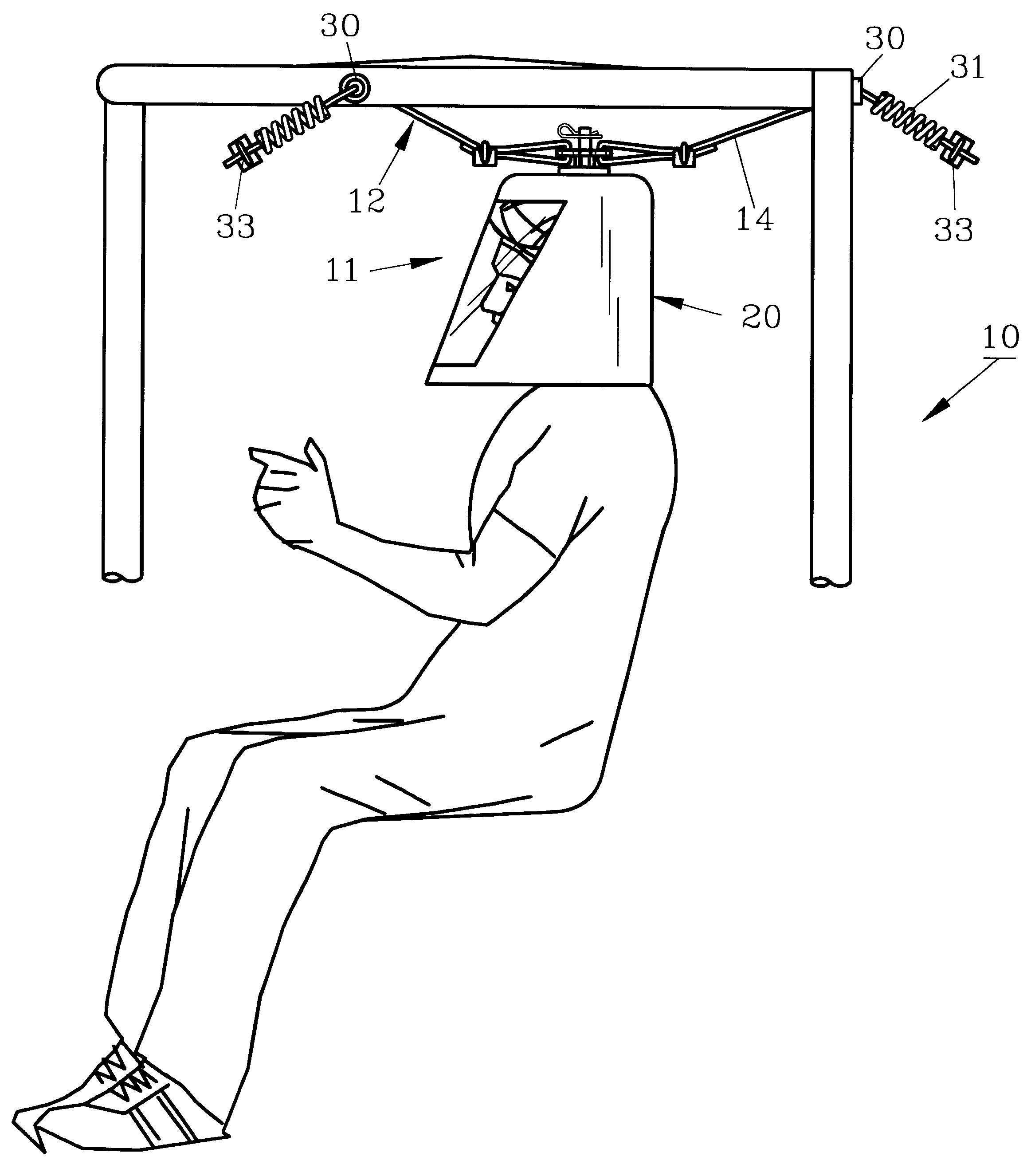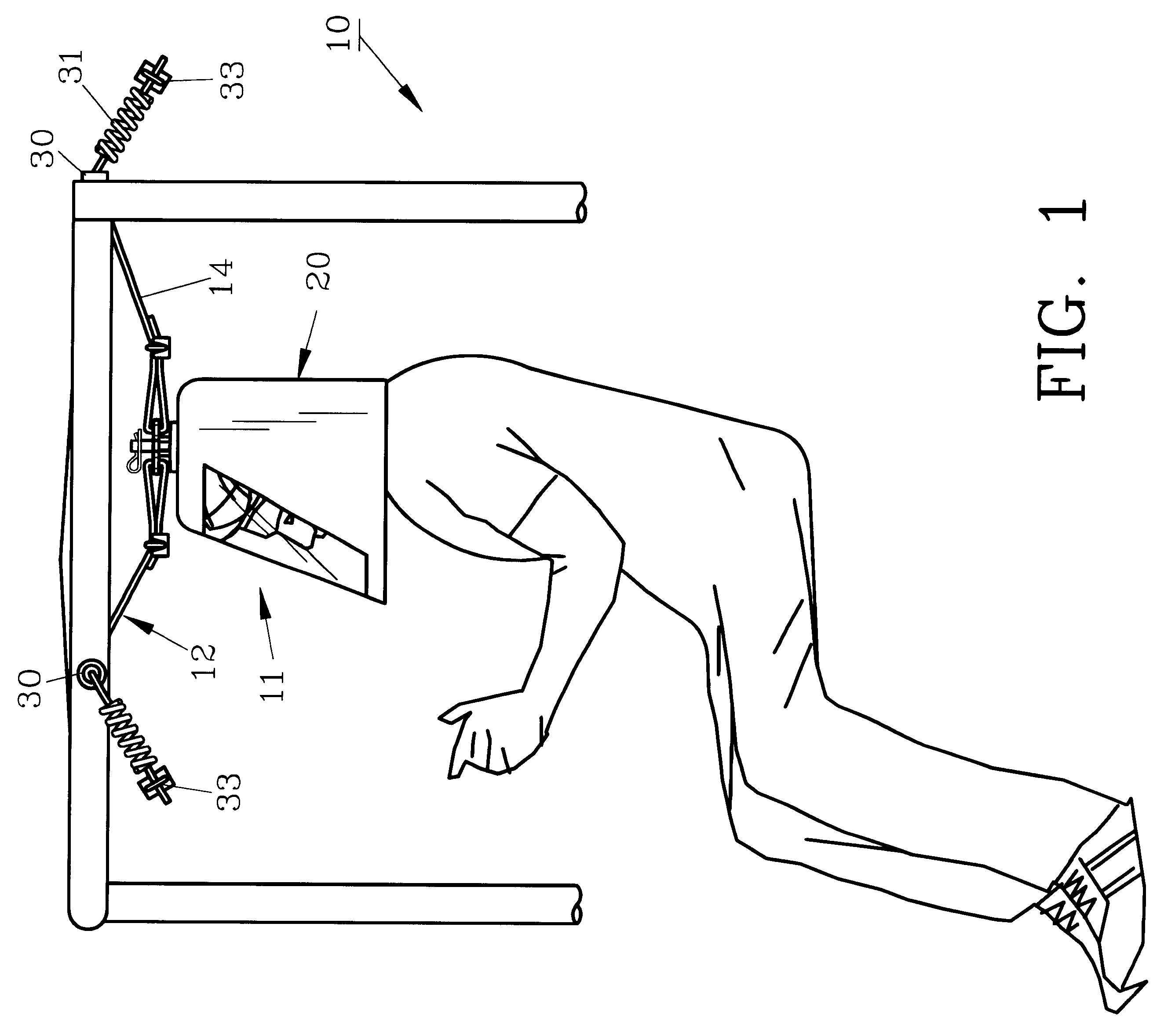Vehicle head restraint device
a head restraint and vehicle technology, applied in the direction of pedestrian/occupant safety arrangement, transportation items, tractors, etc., can solve the problems of high speed impacts still often fatal, head and neck injuries, and unsafe conditions for drivers, and achieve the effect of increasing safety, speeding up speed, and rapid acceleration
- Summary
- Abstract
- Description
- Claims
- Application Information
AI Technical Summary
Benefits of technology
Problems solved by technology
Method used
Image
Examples
Embodiment Construction
For a better understanding of the invention and its operation, turning now to the drawings, FIG. 1 illustrates a side schematic view of an exposed, typical vehicle compartment frame 10 as utilized in racing vehicles as may be sanctioned by NASCAR or other racing organizations. Compartment frame 10 is typically formed from tubular steel and is welded together to protect the driver during rollovers, crashes and other accidents. Preferred restraint device 11 is affixed to compartment frame 10 and as shown in FIG. 2 includes a harness 12 having a planar connector 13 suspended from compartment frame 10 by four steel cables 14. Two of the cables are forward of the driver and two are rearward thereof. Cables 14 are preferably formed of type 302 stainless steel having a 7.times.19 strand core and cables 14 are approximately one-eighth inch (3.17 mm) in diameter. Cables, 14 are preferably swaged to connector 13 which is approximately 3.5" long by 3.5" wide (88.9.times.88.9 mm) and 3 / 16" (4.7...
PUM
 Login to View More
Login to View More Abstract
Description
Claims
Application Information
 Login to View More
Login to View More - R&D
- Intellectual Property
- Life Sciences
- Materials
- Tech Scout
- Unparalleled Data Quality
- Higher Quality Content
- 60% Fewer Hallucinations
Browse by: Latest US Patents, China's latest patents, Technical Efficacy Thesaurus, Application Domain, Technology Topic, Popular Technical Reports.
© 2025 PatSnap. All rights reserved.Legal|Privacy policy|Modern Slavery Act Transparency Statement|Sitemap|About US| Contact US: help@patsnap.com



